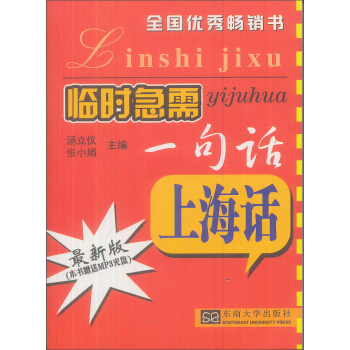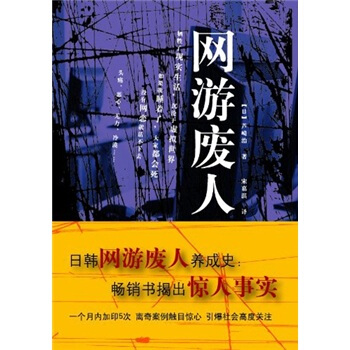![话语分析 [Discourse Analysis]](https://pic.windowsfront.com/10213090/6d654f3d-4245-4984-ba1d-cb6d92eb0737.jpg)

具体描述
内容简介
Disourse analysis is a term which has come to have different interpretations for scholars working in different disciplines. For a sociolinguist. it is concerned mainly with the structure of social interactionmanifested in conversation; for a psycholinguist, it is primarily concerned with the nature of comprehension of short written texts; for the computational linguist, it is concerned with producing operational models of text-understanding within highly limited contexts. In this textbook, the authors provide an extensive overview of the many and diverse approaches to the study of discourse, but base their own approach centrally on the discipline which, to varying degrees, is common to them all - linguistics. Using a methodology which has much in common with descriptive linguistics, they offer a lucid and wide-ranging account of how forms of language are used in communication.Their principal concern is to examine how any language produced by man, whether spoken or written, is used to communicate for a purpose in a context. The discussion is carefully illustrated throughout by a wide variety of discourse types(conversations recorded in different social situations, extracts from newspapers, notices, contemporary fiction, graffiti, etc.). The techniques of analysis are described and exemplified in sufficient detail for the student to be able to apply them to any language in context that he or she encounters.
A familiarity with elementary linguistics is assumed, but the range of issues discussed in conjunction with the variety of exemplifcation presented will made this a valuable and stimulating textbook not only for students of linguistics, but for any reader who ishes to investigate the principles underlying the use of language i natural contexts to communicate and understand intended meaning.
This book makes for absorbing reading. It is very well-written, inspiring and clear. It isindispensable literature for anyone working in the field of discourse analysis. Journal ofSemantics.
目录
Preface by Halliday王宗炎序
导读
Preface
Acknowledgements
Transcription conventions
1 Introduction: linguistic forms and functions
1.1 The functions of language
1. 1. 1 The transactional view
1.1.2 The interactional view
1.2 Spoken and written language
1.2.1 Manner of production
1.2.2 The representation of discourse: texts
1.2.3 Written texts
1.2.4 Spoken texts
1.2.5 The relationship between speech and writing
1.2.6 Differences informbetween written and spoken language
1.3 Sentence and utterance
1.3.1 On data"
1.3.2 Rules versus regularities
1.3.3 Product versus process
1.3.4 On context
2 The role of context in interpretation
2.1 Pragmatics and discourse context
2.1.1 Reference
2.1.2 Presupposition
2.1.3 Implicatures
2.1.4 Inference
2.2 The context of situation
2.2.1 Features of context
2.2.2 Co-text
2.3 The expanding context
2.4 The principles of local interpretation and of analogy
3 Topic and the representation of discourse content
3. 1Discourse fragments and the notion topic
3.2 Sentential topic
3.3 Discourse topic
3.3. 1Topic framework
3.3.2 Presupposition pools
3.3.3 Sentential topic and the presupposition pool
3.4 Relevance and speaking topically
3.5 Speakers topic
3.6 Topic boundary markers
3.6. 1 Paragraphs
3.6.2 Paratones
3.7 Discourse topic and the representation of discourse content
3.8 Problems with the proposition-based representation of discourse content
3.9 Memory for text-content: story-grammars
3.10 Representing text-content as a network
4 Staging and the representation of discourse struc-ture
4 1 The linearisation problem
4.2 Theme
4.3 Thematisation and staging
4.3. 1Staging
4.3.aTheme as main charactertopic entity
4.3.3 Titles and thematisation
4.3-4 Thematic structure
4.3.5 Natural order and point of view
4.3.6 Theme, thematisation and staging
5 Information structure
5.1The structure of information
5.1.1Information structure and the notion givennew in intonation
5.t.2 Hallidays account of information structure: informationunits
5.1.3 ttallidays account of information structure: tone groups and tonics
5.1.4 Identifying the tone group
5.1.5 The tone group and the clause
5.1.6 Pause-defined units
5.1.7 The function of pitch prominence
5.2 Information structure and syntactic form
5.2.1 Given/new and syntactic form
5.2.2 Information structure and sentence structure
5.3 The psychological status of givenness
5.3.1 What does given mean?
5.3.2 A taxonomy of information status
5.3.3 The inormation status taxonomy applied to data
5.4 Conclusion
6 The nature of reference in text and in discourse
6.1 What is text?
6.1.1Cohesion
6.1.2 Endophora
6.1.3 Substitution
6.2 Discourse reference
6.2.1 Reference and discourse representations
6.2.2 Referring expressions
6.3 Pronouns in discourse
6.3.1 Pronouns and antecedent nominals
6.3.2 Pronouns and antecedent predicates
6.3.3 Pronouns and new predicates
6.3.4 Interpreting pronominal reference in discourse
7 Coherence in the interpretation of discourse
7.1 coherence in discourse
7.2 Computing communicative function
7.3 Speech acts
7.4 Using knowledge of the world
7.5 Top-down and bottom-up processing
7.6 Representing background knowledge
7.6.1 Frames
7.6.2 Scripts
7.6.3 Scenarios
7.6.4 Schemata
7.6.5 Mental models
7.7 Determining the inferences to be made
7.8 Inferences as missing links
7.9 Inferences as non-automatic connections
7.10 Inferences as filling in gaps or discontinuities in interpreta-tion
7.11 Conclusion
References
Subject index
Author index
文库索引
精彩书摘
The place at which it appeared is relevant. It was spraygunned on awall in Glasgow. The form of the text, together with the informa-tion about place, may suggest to you, if you have previousexperience of such texts, that this text derives from an interactionbetween street gangs. Encyclopaedic knowledge of the world mightinform you that the writer is a member of Mad Mental (a streetgang) and that the intended addressees are members of TheInsects (another street gang). You then need to make appeal toprevious discourse in which the Insects had proclaimed INSECTSBITE. (You might then appeal to your knowledge of what Hymescalls message-form which informs you that street gang interactionson walls consists of taunts and counter-taunts. Thus you mightarrive at an attribution of intention in the warning SQUASHEDINSECTS DONT BITE and the straight assertion MAD MEN-TAL RULE - without the OK tag, which might be taken to inviteassent on the part of the addressee.) Texts a and b, addressed to the general reader, are relativelyaccessible fragments of language which require only specification ofthe intended referents to make them readily interpretable. Text c isintended for specific addressees, not for the general public, and it ishard for the general public to interpret without access to sharedpresuppositions and previous experience which cannot comfortablybe forced into the framework proposed by Lewis. In order to takeaccount of this, we are going to need some way of making appeals tonotions like shared presuppositions, encyclopaedic knowledge,intention / purpose in uttering and experience of previous similartext which we have simply appealed to in an ad hoc way in ourdiscussion so far.前言/序言
近年来,国际交往日益频繁,国际贸易急速发展,出现了一种前所未有的现象:学外语、教外语、用外语的人多了;研究语言学和应用语言学的人多了;开设这方面专业的高校也多了,语言学硕士生和博士生也多了。就是不以此为专业,学习语言学和应用语言学的也不乏其人。为了给从事这个专业的师生提供便利,同时又帮助一般外语教师、涉外工作者以及汉语研究者开阔思路,扩大视野,提高效率,我们献上这套内容崭新而丰富的丛书——英文版《当代国外语言学与应用语言学文库》。文库首批推出54部外国英文原著,它覆盖了语言学与应用语言学26个分支学科。这批书是我们与各地有关专家教授反复研究之后精选出来的。出版这样大规模的语言学与应用语言学丛书,这在我国语言学界和外语教学界是破天荒第一次。
我们这样做,抱着什么希望呢?总的说来,是遵循教育部关于加强一级学科教育的指示,在世纪之交,推出一套书来给中国的外语教育领航,同时也给一般外语工作者和汉语研究者提供信息,拓宽思路。
我们希望这个文库能成为进一步带动外语教学改革和科研的发动机;我们希望它能成为运载当代外国语言学理论、语言研究方法和语言教学方法来到中国的特快列车;我们希望,有了这套书,语言学与应用语言学专业师生就能顺利地进行工作;我们希望,通过读这套书,青年外语教师和外语、汉语研究者能迅速把能力提高,把队伍不断扩大。
用户评价
这本书的排版和注释系统简直是为深度学习者量身定做的,它流畅地融合了理论的严谨性和文献的翔实性。如果你是一个习惯于在阅读时不断追溯源头的人,你会发现作者在每一个关键论点后都精准地标注了出处,这极大地拓宽了读者的探索路径,而不是让读者止步于书本本身。我特别欣赏作者在构建理论模型时所展现出的那种清晰的“地图绘制”能力。他似乎非常清楚,当读者走入这个复杂的语言分析领域时,最需要的就是一张清晰的导览图,所以他提供了一系列可操作的分析工具和检查清单。这些工具不是教你如何套用公式,而是教你如何像侦探一样去收集证据,如何构建一个有力的论证链条。这使得这本书不仅是一本理论导论,更像是一本实战手册。我在尝试用书中的框架去分析我工作邮件中的沟通模式时,发现那些过去感到别扭或不顺畅的地方,一下子就有了逻辑上的解释,那种豁然开朗的感觉是其他任何同类书籍都难以提供的。
评分这本书,恕我直言,简直是一场文字的迷宫探险,但绝对不是那种让人迷失方向的晦涩难懂,而更像是走入了一片被精心设计的花园。我记得第一次翻开它时,就被那种对语言现象的细致入微的观察力所震撼。它没有直接告诉我“你应该怎么想”,而是耐心地展示了“语言是如何运作的”,仿佛给我提供了一副能看透日常对话底层结构的X光眼镜。作者在处理一些看似寻常的语境时,总能挖掘出隐藏在字面意义之下的权力关系、文化预设以及社会建构的痕迹。特别是关于“身份构建”那几章,读起来酣畅淋漓,它彻底颠覆了我过去对“我是谁”这个简单问题的认知,让我意识到,我们所使用的每一个词汇、每一个句法结构,都不是孤立的个体,而是我们与世界持续协商、不断重塑自我的工具。这本书的魅力就在于它的启发性,它迫使你走出舒适区,去审视那些你习以为常的交流模式,从政治演讲到街边闲聊,万物皆可分析,让阅读本身变成了一种积极的实践活动,而不是被动的接收信息。读完之后,我发现自己看新闻、听播客时的注意力都变得更加敏锐和批判性了。
评分说实话,这本书的阅读体验是那种“慢热型”的,它不像流行小说那样能让你一口气读完,因为它要求你不断地进行元认知思考,即“思考自己是如何思考的”。在结构安排上,作者的逻辑推进非常有层次感,从宏观的社会语境谈起,逐步聚焦到微观的词汇选择和语篇组织,这种由大及小的叙事策略,成功地避免了理论的初阶枯燥感。尤其值得称赞的是,它在处理跨文化交流和不同群体间的话语差异时,展现出了一种罕见的包容性和复杂性视野。它没有简单地把一种话语模式判定为“优越”或“错误”,而是着重分析了不同话语实践在特定场域中的“有效性”和“适应性”。这种细腻的处理,让原本可能引发争论的话题,转化为了一场关于理解和解释的学术之旅。我个人认为,对于那些对社会学、人类学有兴趣,但又觉得传统理论过于僵硬的读者来说,这本书提供了一种非常鲜活和充满活力的研究范式,它让你对“沟通障碍”有了更深层次的理解,认识到那不仅仅是词汇不通,更是底层世界观的差异。
评分当我读完这本书的后半部分时,我的第一反应是:这简直就是一份对现代媒体生态的“拆骨疗法”手册。它没有采用那种空泛地批判媒体的论调,而是深入到具体的文本分析方法论中,教你如何像拆解一台精密机器一样去解剖一篇报道、一个广告,甚至是社交媒体上的一条热门评论。让我印象尤其深刻的是其中关于“隐喻系统”的论述,作者用一系列令人拍案叫绝的案例,揭示了强势话语是如何通过构建特定的比喻框架,来定义我们看待特定议题(比如经济危机、环境问题)的方式。这种对语言工具箱的精妙运用,展示了理论如何可以非常落地和实用。它不是高居庙堂的象牙塔里的理论,而是可以直接带入职场或日常辩论中的武器。阅读过程中,我时常需要停下来,找一张纸来梳理作者提出的那些层层递进的分析框架,因为信息量实在太密集了,每一个概念的引入都带着深厚的历史语境支撑,要求读者必须全神贯注,但回报也是巨大的——它极大地提升了我对信息流的鉴别能力,让人不再轻易被表面的激情或煽动性话语所裹挟。
评分阅读这本书的过程,更像是一场与作者进行的高级别对话,而不是单向灌输。作者的语气总是保持着一种审慎的学者的客观性,但字里行间又流淌着对社会公正和清晰表达的深切关怀。其中关于“沉默的政治”那几章,简直是神来之笔。它讨论的不是人们说了什么,而是“人们为什么没有说”以及“什么被系统性地排除在了公开讨论之外”。这种对“非言语”领域的探索,极大地丰富了我对“话语权力”的理解,让我意识到,谁拥有定义议题、谁拥有发声的渠道,这远比具体的内容本身更为关键。它强迫我反思我自己在各种社交圈中扮演的倾听者或发言者的角色,并审视自己是否在无意中维护了某种话语上的不平等。这本书的阅读体验是深刻且略带沉重的,因为它揭示了太多潜藏的运作机制,但正是这种揭示,带来了真正的解放感——因为一旦你看清了规则,你就有能力去挑战或至少绕开那些限制性的结构。
评分话语分析经典教科书,这学期的课
评分书挺好,就是不太喜欢这系列书籍的书味,或者纸质味
评分做学问必备书籍,很好的,经典!!
评分一直在京东买书的,很好很放心
评分条理清晰,内容充实,语用学必读书目
评分在京东买图书很方便,还是正版图书,买着放心
评分做学问必备书籍,很好的,经典!!
评分很好很好,速度快,正版。
评分教授指定的话语分析必读书,权威著作
相关图书
本站所有内容均为互联网搜索引擎提供的公开搜索信息,本站不存储任何数据与内容,任何内容与数据均与本站无关,如有需要请联系相关搜索引擎包括但不限于百度,google,bing,sogou 等
© 2025 book.coffeedeals.club All Rights Reserved. 静流书站 版权所有











![传教士中文报刊史 [A History of the Missionaries' Chinese Press] pdf epub mobi 电子书 下载](https://pic.windowsfront.com/10813985/a7880fce-d950-4372-ad12-f71c13f0b4e9.jpg)



![学习质量评价:SOLO分类理论可观察的学习成果结构 [Evaluating the Quality of Learning:The Solo Taxonomy Stucture of the Observed Learning Outcome] pdf epub mobi 电子书 下载](https://pic.windowsfront.com/10870181/45cdad4d-e444-433c-82cf-d1310a192d57.jpg)




